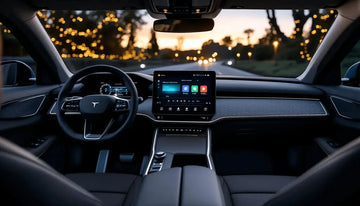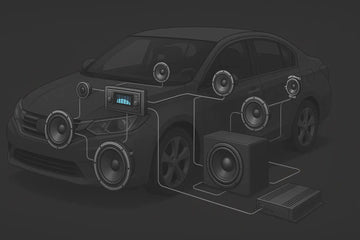Best Car Audio Sound Settings 2025
Expert Tuning Guide with Interactive EQ Calculator
Quick Start: Perfect Sound in 30 Seconds
2025 Universal Quick Settings
Interactive EQ Calculator 2025
Genre Presets
2025 Vehicle Optimization
10-Band Equalizer
Real-Time Frequency Response
Current Settings:
2025 Vehicle-Specific Optimization
2025 Toyota Models
Camry Premium Audio: Bass +4dB, Mid +1dB, Treble +3dB
RAV4 JBL System: Bass +2dB, Mid-range +2dB, Treble +2dB
Highlander Platinum: Bass +3dB, Presence +4dB
Tip: Toyota's 2025 systems respond well to midrange boost
2025 Honda Models
Civic Premium: Bass +3dB, Mid +0dB, Treble +2dB
Accord Bose: Bass +2dB, Mid +1dB, Treble +3dB
CR-V Touring: Bass +4dB, Mid-range flat, Treble +1dB
Tip: Honda's new DSP responds to gentle adjustments
2025 Ford F-Series
F-150 B&O Unleashed: Bass +5dB, Mid +2dB, Treble +4dB
Super Duty Premium: Bass +4dB, Mid flat, Treble +3dB
Raptor Audio: Bass +6dB, Mid +1dB, Treble +2dB
Tip: Truck cabins need extra bass compensation
Professional Tuning Process 2025
Step-by-Step Method
-
1
Baseline Setup
Set all EQ bands to 0dB, volume to 75%
-
2
Reference Track
Use familiar, well-recorded song
-
3
Bass Foundation
Adjust 60-250Hz for warmth and impact
-
4
Midrange Clarity
Fine-tune 250Hz-4kHz for vocals
-
5
Treble Sparkle
Adjust 4kHz+ for detail and air
Pro Tips for 2025
Factory Integration
Many 2025 vehicles have advanced DSP that works with, not against, your settings
Streaming Optimization
Set Spotify/Apple Music to highest quality, disable their EQ when using car settings
Room Correction
2025 systems often include automatic room correction - let it run first, then fine-tune
Advanced DSP Settings 2025
Time Alignment
Driver Distance: Measure from each speaker to driver's ears
Delay Calculation: (Distance difference ÷ 1130) × 1000 = ms delay
2025 Auto-Align: Many systems now do this automatically
Crossover Points
Subwoofer: 80Hz low-pass, 24dB/octave
Front Speakers: 80Hz high-pass, 12dB/octave
Tweeter: 3.5kHz high-pass, 18dB/octave
Phase Alignment
Subwoofer Phase: Try 0° vs 180°, choose louder option
Speaker Polarity: Ensure all + and - connections correct
Digital Correction: Use built-in phase adjustment if available
2025 Troubleshooting Guide
Common Problems
No Bass Response
- • Check subwoofer phase (0° vs 180°)
- • Verify crossover frequency (try 80-100Hz)
- • Ensure amplifier gain isn't too low
- • Check for loose connections
Distorted Sound
- • Reduce amplifier gain by 25%
- • Lower head unit volume (max 75%)
- • Check speaker power handling
- • Inspect wiring for shorts
2025-Specific Issues
Phone Integration Problems
- • Disable phone's built-in EQ
- • Use lossless streaming when possible
- • Check CarPlay/Android Auto settings
- • Update vehicle software
Auto-EQ Conflicts
- • Temporarily disable auto-correction
- • Let system calibrate first, then adjust
- • Check for multiple EQ sources
- • Reset to factory, start over
Recommended Equipment 2025
Frequently Asked Questions
What are the best universal EQ settings for 2025 cars?
Start with our calculator above. Generally: Bass +3dB (60Hz), Midrange flat (1kHz), Treble +2dB (4kHz). Adjust based on your vehicle and preferences.
Should I use my phone's EQ or my car's EQ?
Use your car's EQ for best results. Disable phone EQ (Spotify, Apple Music) to avoid double-processing. Car systems know their speakers better.
How do 2025 factory systems compare to aftermarket?
2025 factory systems are significantly better than previous years, especially premium brands. Many now include DSP and room correction that rivals aftermarket solutions.
Can I damage my speakers with EQ settings?
Excessive boosting (+6dB or more) can damage speakers. Our calculator limits safe ranges. If you hear distortion, reduce gain immediately.





